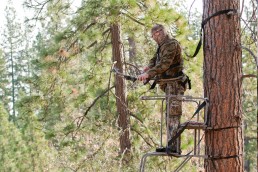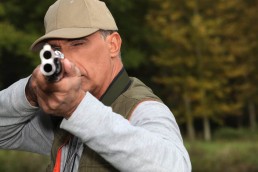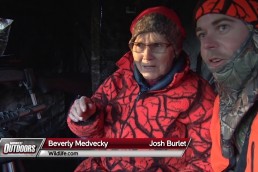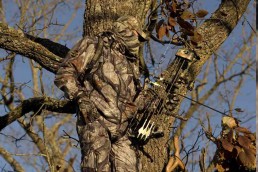SHARE THIS POST
It’s still a long way until the start of deer season, and that is reason enough for many hunting archers to simply forget about doing any serious shooting. If you’re one of those who feels this way let’s take a harder look at your mindset.
Whether you’re an archery or gun hunter, you owe it to that game to make it a clean, quick kill shot. That means that you must practice the sport, including your form with multiple angles so that you’re able to make many types of shots when you need to. Does it mean that you should spend a lot of hours at the local indoor range or possibly at a local archery club, shooting arrow after arrow? That might actually be fun for a lot of us, but for the serious hunting archer, that is not necessarily the case. If you come across a clean shot at a deer every single time where you’re standing upright and the deer is exactly 20 yards away from you and standing broad side, then only range-shooting practicing is enough, but the odds of only seeing this scenario happening are astronomical. Shooting at a local field range can be a better form of practice than indoor shooting, but there are drawbacks, especially in regard to the type of shot you’ll likely have when you’re afield.
So, if two of the most popular kinds of shooting are not that good for the hunting archer, then what is needed?
Most deer hunters today prefer to hunt from a treestand, and obviously this is an elevated position. This angle is quite different from shooting on a level plane, such as in the case of said indoor or field ranges. If you intend to hunt from a treestand this fall, some of your practice must be from an elevated position, similar to what you will use in the field.
When setting up an elevated shot for practice, always remember to take all the necessary steps to ensure your safety. If not, you might suffer a fall and miss the upcoming season altogether. When up the tree, make sure that your shooting form fits the situation. The shot will be downward, and you must bend at the hips to bring your sight picture on target. Simply lowering your bow arm to achieve this will not work.
Are you enjoying this post?
You can be among the first to get the latest info on where to go, what to use and how to use it!
While you’re working on these changes to shooting from the ground, give some thought to the adjustments of the deer target. Shooting from a level position gives you a clear shot at the vitals area of a deer’s chest. From an elevated position, though, what you see of that vital area is different and you must adjust where you want your arrow to hit so that you’re again in the deer’s chest region. When up in a treestand, the angle to a deer’s vitals grows smaller and smaller as the animal approaches your site so your offseason-shooting practice technique should always be kept in mind. Add to this the fact that as a deer approaches its spine location comes into play, and then it’s a whole new ball game. Under actual hunting conditions, it’s these types of factors cause you to time a shot for the perfect opportunity, which can often result in a miss, or worse, a bad hit.
Should you prefer to hunt from a ground blind, many of these considerations will not apply. Your shot will be at a level position with the deer, and that is great. However, deer will be able to pick up your scent easier and make your shot opportunity farther away, adding yet another factor to be worked into your offseason repetitions. The shot may be similar to the ones when you practiced, but you’ll have to be always aware of the wind and how it affects your blind and where you position it in relation to the likely movements of the deer into your chosen site and its distance.
If you know you’re hunting from a ground blind, you might even want to change your camouflage clothes to all black. In a blind, you’re sitting in a blackened site and this is virtually what a deer can see. So if you’re in all black, you’ll just blend in better. Or, you can at least use a black facemask, as your face may show up too well from a blind without one.
In both of these pre-season practice scenarios, check all your gear and its components for any unnecessary sounds, which could alert the deer to your presence. It’s easier to fix these things now during a practice session than within the actual season. By the opener, you want everything to be working perfectly.
Finally, time is a consideration for your preparation, and how many arrows you shoot in a practice session also depends on how much you like to shoot your bow or other reasons. But if you can get in as little as five to 10 shots a day at various positions, you will be well on your way to becoming a better shot for the season from all angles.
MWO
SHARE THIS POST
Did you enjoy this post?
You can be among the first to get the latest info on where to go, what to use and how to use it!
Bob Gorge
Bob Gorge is an avid bowhunter, with many big game animals to his credit. He has been an official big game scorer. He’s also a long-time archery instructor, working with several different organizations. As an instructor, he runs the gamut, working with everyone from seasoned bowhunters to beginning children.



